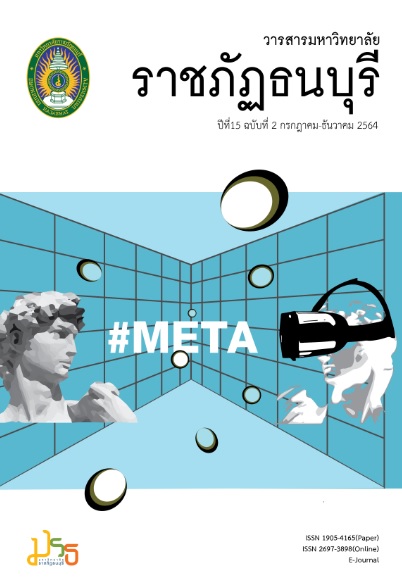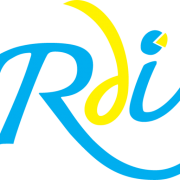The Development of a Training Model to Develop Engineering Potential with Cooperation between Establishments and Higher Education Institutions
Keywords:
training model development, mechanical-engineering potential, CIPP Model AssessmentAbstract
Production and development of the workforce in the industry focuses on developing human potential of all ages and building a learning society through re-skilling workers in the workplace to be consistent with the development of the workforce. The objectives of this research were to develop a training model and study the effect of a training model on developing mechanical-engineering potential with cooperation between establishments and higher education institutions using a Mixed Methods research design. The data was collected using a sample of 10 members of the operating committee and 16 trainees. The content coverage included four courses: 1) Basic Drawing, 2) Basic Machine Tools, 3) Mechanical Maintenance Work, and 4) Basic Electricity, and the CIPP Model was used to evaluate the training model's results. The results revealed that the training activities emphasized practical learning. It was a set of 28 times of training that each time took three hours; twice a week. The training activities were both theoretical and practical, with an emphasis on giving the problem and instruction from the activity sheets and practicing skills repeatedly until acquiring proficiency by using proper tools and machines. The instructional materials consisted of reflection sheets, activity sheets, knowledge sheets, exercises, and assignment sheets. In aspect of measurement and evaluation, the pretest was used to study the background of learners' knowledge. The instructor observed, assessed the practical skills, and recorded the learning of each trainee. The post-test, then, was used to summarize the learners' knowledge. Overall, all the trainees passed 75 percentage criteria. The results indicated that the context component of the training was at a good level (x̅ = 3.76), and the input
Downloads
References
กีรติกร บุญส่ง และหทัยกานต์ กุลวชิราวรรณ์. (2561). การพัฒนาหลักสูตรฝึกอบรมที่มีผลต่อประสิทธิภาพของพนักงานปฏิบัติการระดับ 4 กลุ่มวิชาชีพหลักและกลุ่มวิชาชีพสนับสนุนในการขับเคลื่อนองค์การรัฐวิสาหกิจแห่งหนึ่งสู่การเป็นองค์การสมรรถนะสูง (HPO). วารสารปัญญาภิวัฒน์, 10(3): 125-137.
เฉลิมศักดิ์ นามเชียงใต้. (2561). การพัฒนากำลังคนเพื่อเพิ่มศักยภาพการแข่งขัน. วารสารวิชาการและวิจัย มหาวิทยาลัยภาคตะวันออกเฉียงเหนือ, 8(3): 5-8.
ฐานเศรษฐกิจ. (2560). พัฒนาแรงงานทักษะ ตอบโจทย์อุตสาหกรรม 4.0. ค้นเมื่อ 23 พฤษภาคม 2563, จาก https://www.thansettakij.com/content/218071.
เติมศักดิ์ จั่นเพชร. (2556). การพัฒนารูปแบบการฝึกอบรมเพื่อเพิ่มทักษะการปฏิบัติงานของผู้ช่วยพยาบาลโดยใช้ชุดการเรียนรู้ด้วยการนำตนเองและสุนทรียสนทนา. วิทยานิพนธ์การศึกษาดุษฎีบัณฑิต สาขาวิชาการศึกษาผู้ใหญ่ บัณฑิตวิทยาลัย มหาวิทยาลัยศรีนครินทรวิโรฒ.
ปัทมา จันทวิมล. (2556). การพัฒนารูปแบบการฝึกอบรมแบบผสมผสานโดยใช้หลักการจัดการความรู้ และการเรียนรู้จากการปฏิบัติ เพื่อพัฒนาสมรรถนะการออกแบบการฝึกอบรมของนักพัฒนาบุคลากร. วิทยานิพนธ์การครุศาสตรดุษฎีบัณฑิต สาขาวิชาเทคโนโลยีและสื่อสารการศึกษา คณะครุศาสตร์ จุฬาลงกรณ์มหาวิทยาลัย.
ปิยะ ศักดิ์เจริญ. (2558). ทฤษฎีการเรียนรู้ผู้ใหญ่และแนวคิดการเรียนรู้ด้วยการชี้นำตนเอง : กระบวนการเรียนรู้เพื่อการส่งเสริมการเรียนรู้ตลอดชีวิต. วารสารพยาบาลทหารบก, 16(1): 8-13.
ปิยะนิตย์ โอนพรัตน์วิบูล และนาทวุฒิ ตรีเพ็ชร. (2557). แรงงานไทย โอกาสหรือข้อจำกัดในการพัฒนาอุตสาหกรรมของประเทศ. วารสารเศรษฐกิจและสังคม, 51(3): 6-14.
พัชริดา เอี่ยมสุนทรชัย. (2559). การประเมินผลโครงการฝึกอบรมผู้บริหาร. การค้นคว้าอิสระบริหารธุรกิจมหาบัณฑิต คณะพาณิชยศาสตร์และการบัญชี มหาวิทยาลัยธรรมศาสตร์.
เพชรรัตน์ พิบาลวงค์ และคณะ. (2562). การวิจัยประเมินผลโครงการอบรมหลักสูตรการพยาบาลทางสาขาเวชปฏิบัติครอบครัว วิทยาลัยพยาบาลบรมราชชนนี สรรพสิทธิประสงค์. วชิรเวชสารและวารสารเวชศาสตร์เขตเมือง, 63(3), 175-184.
ศักรินทร์ ชนประชา. (2557). ทฤษฎีการเรียนรู้ผู้ใหญ่ : สิ่งที่ครูสอนผู้ใหญ่ต้องเรียนรู้. วารสารศึกษาศาสตร์ มหาวิทยาลัยสงขลานครินทร์ วิทยาเขตปัตตานี, 25(2): 13-23.
ศูนย์ประสานงานการผลิตและพัฒนากำลังคนอาชีวศึกษา. (ม.ป.ป.). ยุทธศาสตร์. ค้นเมื่อ 3 กันยายน 2563, จาก https://bit.ly/3u5NTU3
สำนักงานปลัดกระทรวงอุตสาหกรรม. (2559). แผนยุทธศาสตร์กระทรวงอุตสาหกรรม (พ.ศ. 2560-2564). ค้นเมื่อ 23 พฤษภาคม 2563, จากhttp://www.industry.go.th/
psd/index.php/agency/2016-04-21-04-17-02/2016-04-21-04-20-09/1031-2560-2564-2563-2
โสภา แซ่ลี. (2558). การประเมินโครงการคืนครูให้นักเรียนโดยประยุกต์ใช้รูปแบบการประเมิน CIPP Model สังกัดสำนักงานเขตพื้นที่การศึกษาประถมศึกษากาญจนบุรี เขต 3. วิทยานิพนธ์ครุศาสตร มหาบัณฑิต สาขาวิชาวิจัยและประเมินผลการศึกษา บัณฑิตวิทยาลัย มหาวิทยาลัยราชภัฏกาญจนบุรี.
Fast, O. M., Teka, H. G., & Alemayehu, M. (2019). The impact of a short-term training program on workers’ sterile processing knowledge and practices in 12 Ethiopian hospitals: A mixed methods study. PloS one, 14(5): 1-11.
Gil, A. J., Garcia-Alcaraz, J. L., & Mataveli, M. (2015). The training demand in organizational changes processes in the Spanish wine sector. European Journal of Training and Development, 39(4): 315-331.
Maloney, F. (2021). Exploring further education and training:“who is the further education and training adult learner”? (Doctoral dissertation). Ireland: Dublin City University.
Rooholamini, A., Amini, M., Bazrafkan, L., Dehghani, M. R., Esmaeilzadeh, Z., Nabeiei, P., & Kojuri, J. (2017). Program evaluation of an integrated basic science medical curriculum in Shiraz Medical School, using CIPP evaluation model. Journal of Advances in Medical Education & Professionalism, 5(3), 148-154.
Sal, A., & Raja, M. (2016). The impact of training and development on employees performance and productivity. International Journal of Management Sciences and Business Research, 5(7): 36-70.
Stufflebeam, D.L. (2003). The CIPP model for evaluation. In T. Kelleghan & D.L. Stufflebeam (Eds.). International Handbook of Education Evaluation (pp. 31-62). London: Kluwer Academic Press.
Zuber-Skerritt, O., & Teare, R. (Eds.). (2013). Lifelong action learning for community development: Learning and development for a better world. Springer Science & Business Media.
Downloads
Published
How to Cite
Issue
Section
License
Copyright (c) 2021 Dhonburi Rajabhat University

This work is licensed under a Creative Commons Attribution-NonCommercial-NoDerivatives 4.0 International License.
บทความที่ได้รับการตีพิมพ์เป็นลิขสิทธิ์ของ มหาวิทยาลัยราชภัฏธนบุรี
ข้อความที่ปรากฏในบทความแต่ละเรื่องในวารสารวิชาการเล่มนี้เป็นความคิดเห็นส่วนตัวของผู้เขียนแต่ละท่านไม่เกี่ยวข้องกับมหาวิทยาลัยราชภัฏธนบุรีและบุคลากรท่านอื่นๆในมหาวิทยาลัยฯ แต่อย่างใด ความรับผิดชอบองค์ประกอบทั้งหมดของบทความแต่ละเรื่องเป็นของผู้เขียนแต่ละท่าน หากมีความผิดพลาดใดๆ ผู้เขียนแต่ละท่านจะรับผิดชอบบทความของตนเองแต่ผู้เดียว






